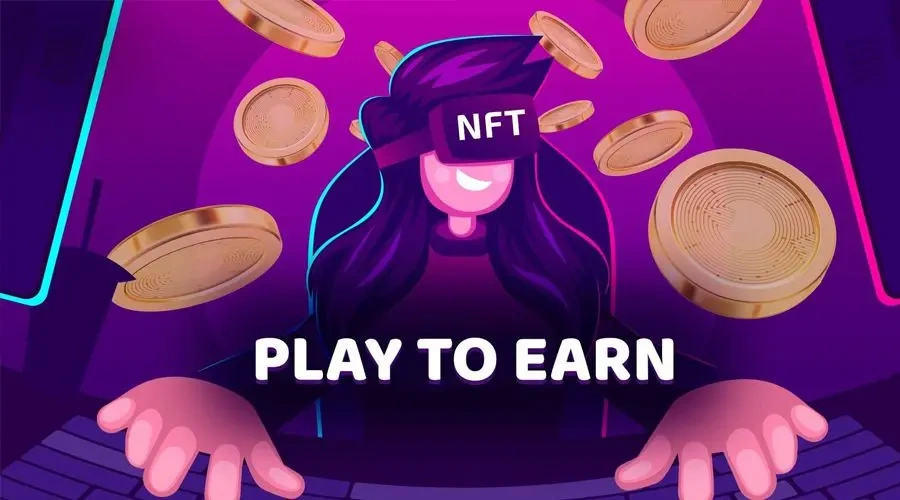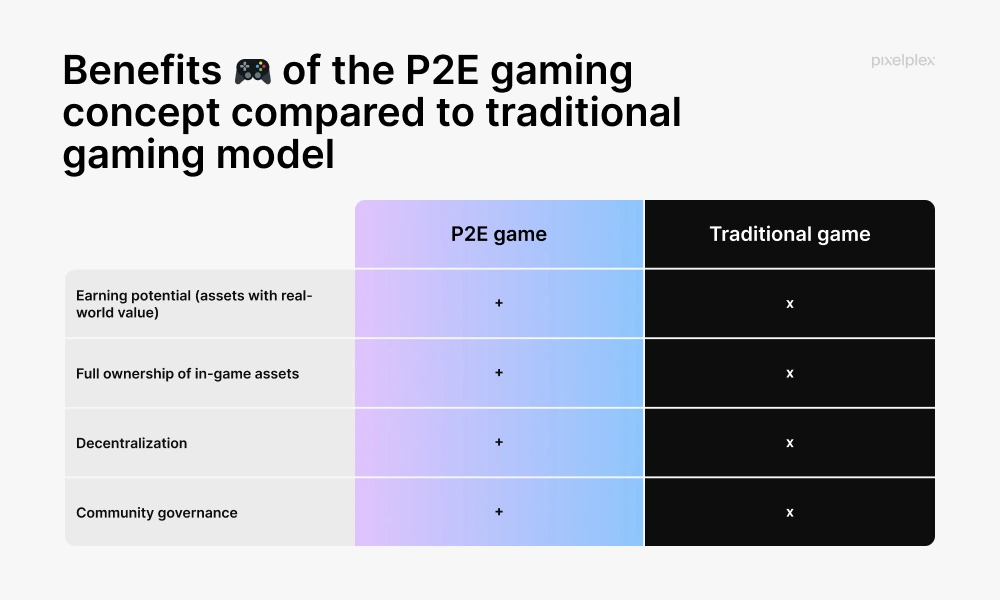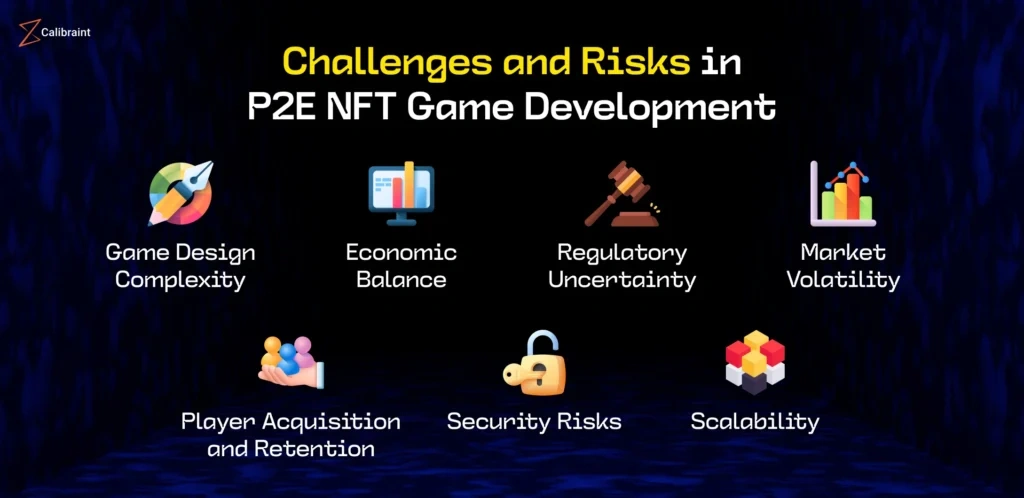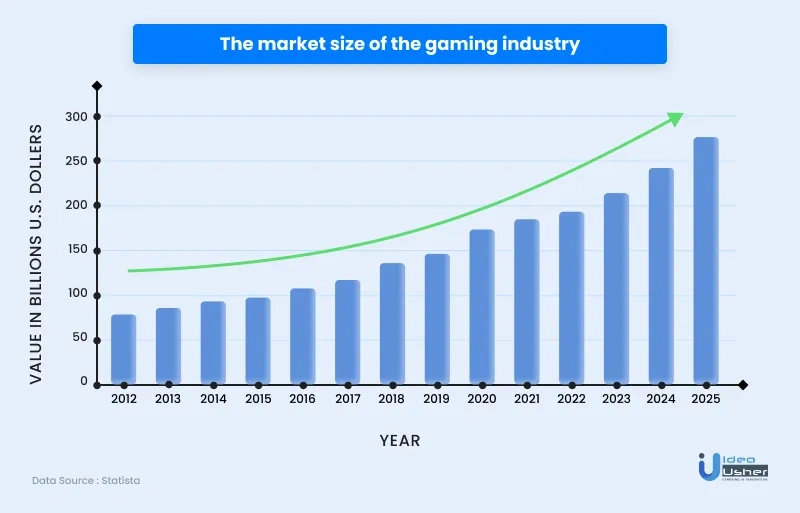In 2025, play-to-earn crypto games are more than just a buzzword—they’re a growing movement where players earn real-world value through their time and skill in virtual worlds. The concept of play to earn crypto games bridges the once-distinct gap between gaming and finance. It’s reshaping the nature of digital ownership and turning millions of players into participants in decentralized digital economies.
Gaming for Gains: What Are Play-to-Earn Games?

Credit from GAM3S.GG
Play-to-earn (P2E) games are video games built on blockchain technology that reward players with digital assets such as cryptocurrencies or NFTs (non-fungible tokens) that have real-world value. These games go beyond entertainment—they offer economic incentives that allow players to profit from in-game participation.
In contrast to traditional video games—where progress is locked within proprietary platforms and in-game currencies hold no external worth—P2E titles empower players to trade, sell, or hold their digital assets on open markets.
It’s a shift from digital escapism to digital opportunity.
How Play-to-Earn Crypto Games Work
At the heart of P2E systems lies blockchain technology. Each transaction—whether it’s acquiring an NFT sword or cashing out tokens—is verified on a decentralized ledger, ensuring transparency and security. Here’s how it typically plays out:
- Players earn tokens by completing missions, winning battles, or farming resources.
- These tokens can be traded on crypto exchanges for other cryptocurrencies or fiat money.
- NFTs such as characters, land, or items are minted and owned by players, giving them resale value.
- Smart contracts automate in-game economies, enabling peer-to-peer trades, rental of digital assets, or fractional ownership.
In short: You play, you earn, and you own.
Core Concepts That Power Play-to-Earn Crypto Gaming
1. Blockchain Infrastructure
A decentralized and immutable network, blockchain secures digital assets and confirms each transaction transparently. Without a central authority, players maintain full control of their game-earned assets.
2. Cryptocurrencies
Games typically create in-game tokens, which players can convert into cryptocurrencies like Ethereum or stablecoins. Popular P2E games, such as Gods Unchained and Illuvium, reward players in tradable native tokens.
3. Non-Fungible Tokens (NFTs)
Each in-game item or character exists as a unique token on the blockchain. This makes digital items transferable across platforms or markets such as OpenSea, where rare NFTs can sell for thousands of dollars.
4. Smart Contracts
These are self-executing agreements coded into the game’s backend. They ensure, for example, that when you defeat an opponent, your crypto reward is instantly transferred to your wallet.
5. Tokenomics
A term blending “token” and “economics,” tokenomics refers to how a game’s economy is structured—supply limits, inflation mechanisms, reward distribution, and utility value all play a role in sustainability.
Benefits of Play-to-Earn Crypto Games

Credit from Pixelplex.io
For Players
- Monetization of Time: No longer is gaming just a time sink—your efforts can translate into real income.
- Digital Ownership: Players genuinely own their in-game items. A skin or weapon isn’t just a cosmetic upgrade; it’s a tradable digital asset.
- Global Access: In many developing regions, P2E games have opened up new income opportunities.
- Community-Driven Development: P2E ecosystems often encourage player input through DAOs (decentralized autonomous organizations).
For Developers
- Innovative Monetization: Developers earn from transaction fees, token launches, and NFT sales.
- Stronger Engagement: Players are more invested emotionally and financially, leading to prolonged game lifespans.
- Viral Growth: With financial rewards as incentive, players become evangelists, inviting others to join.
Real Examples: Games That Are Leading the Movement
| Game Title | Blockchain | Token/Currency | Notable Features |
|---|---|---|---|
| Axie Infinity | Ronin | AXS / SLP | Breedable NFTs, PvP battles, play-to-earn model |
| Gods Unchained | Ethereum | GODS | Free-to-play TCG with NFT card ownership |
| The Sandbox | Ethereum | SAND | Player-created virtual worlds, land NFTs |
| Illuvium | Immutable X | ILV | Auto-battler with high-fidelity NFTs |
| Star Atlas | Solana | ATLAS / POLIS | Space exploration and economic strategy |
Risks and Challenges in Play-to-Earn Gaming

Credit from Calibraint
Despite its promise, the P2E sector is not without significant hurdles.
1. Scalability and Gas Fees
Ethereum-based games often suffer from high transaction costs. Layer-2 solutions like Immutable X or alternate chains like Solana offer relief, but adoption is fragmented.
2. Security Vulnerabilities
P2E platforms are frequent targets of exploits. The 2022 Ronin hack (Axie Infinity) saw over $600 million stolen, raising concerns over asset safety.
3. Regulatory Uncertainty
Crypto’s legal landscape remains fluid. In some countries, P2E earnings are taxable; in others, the games may be outright restricted.
4. Economic Volatility
The value of game tokens can swing wildly. Without careful tokenomics, some ecosystems collapse under inflationary pressure—“too many tokens chasing too few players.”
5. Learning Curve
Wallet setup, understanding token values, and gas fees can be overwhelming for new players unfamiliar with crypto environments.
Play-to-Earn Crypto Games vs Traditional Gaming
| Feature | Traditional Games | Play-to-Earn Games |
|---|---|---|
| Asset Ownership | Centralized, non-transferable | Decentralized, player-owned |
| Earnings | None or streaming only | In-game crypto rewards |
| Market Liquidity | Closed ecosystems | Open marketplaces, NFT tradability |
| Incentive for Time | Entertainment | Income and asset appreciation |
Is P2E Sustainable or Just a Trend?
As of mid-2025, the play-to-earn crypto games model is undergoing a shift. Early speculative hype is being replaced by games with deeper mechanics, lower entry costs, and more sustainable economies. Some projects now emphasize “Play-and-Own” or “Play-and-Create” to highlight asset control and user-generated content rather than passive earning.
The long-term future likely depends on three things:
- Stronger tokenomics with deflationary pressure
- Better onboarding experiences for mainstream players
- Regulatory clarity
Game developers who balance fun with fair earnings—not just speculation—are likely to lead the next generation of crypto-infused games.
Conclusion: Play-to-Earn Crypto Game Is More Than Just Crypto Hype

Credit from IdeaUsher
The rise of play to earn crypto games has blurred the line between gamer and investor. It’s no longer just about mastering skills or exploring fantasy worlds—it’s about participating in digital economies, owning what you earn, and navigating new financial ecosystems.
For beginners, the path may seem complex—but with patience, curiosity, and a willingness to learn, play-to-earn gaming offers a unique and potentially rewarding experience that merges entertainment with economics.
As gaming continues evolving, one thing is clear: P2E is not just a moment; it’s a movement.



